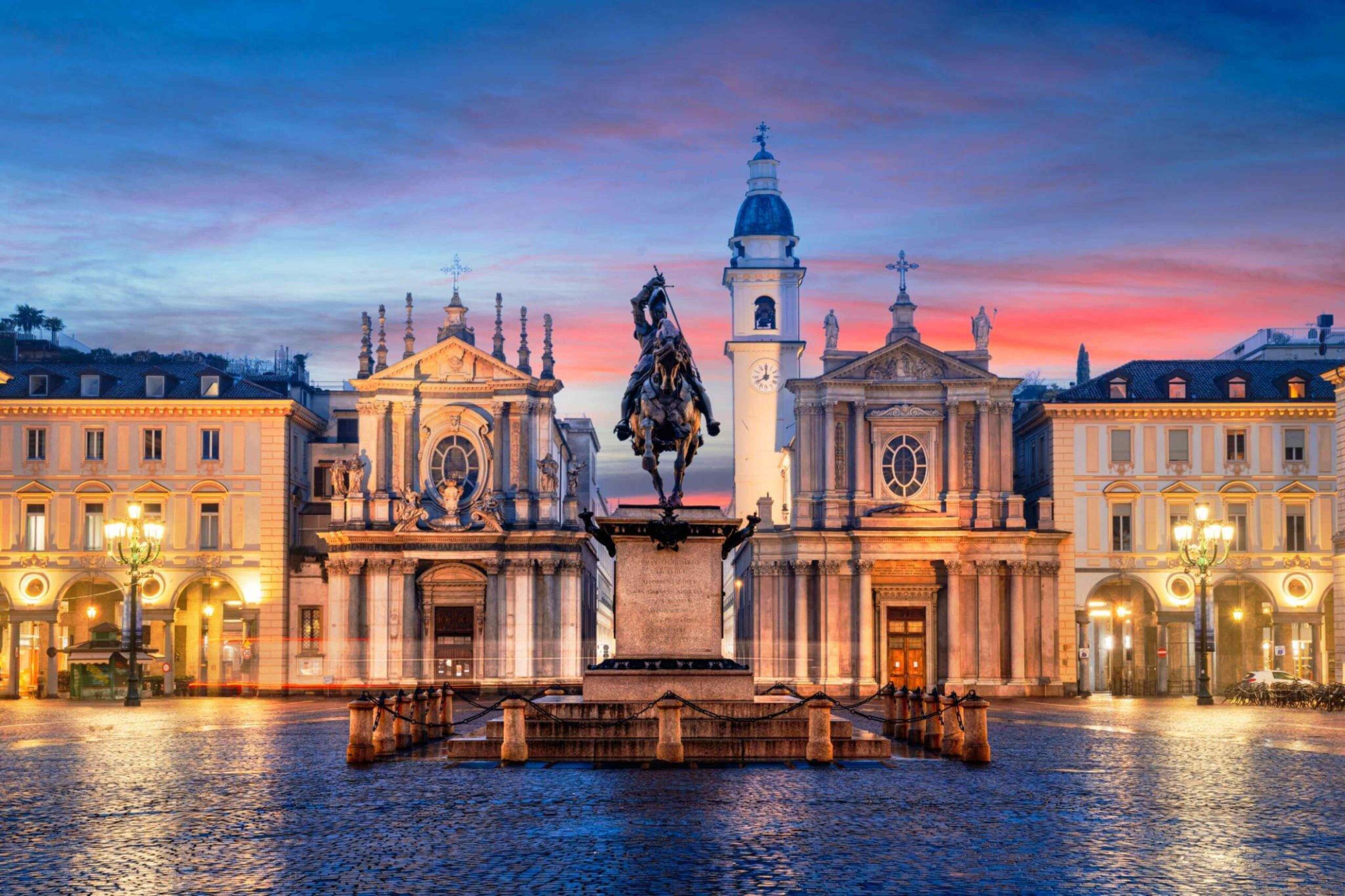Italy, a place steeped in history, art, and culture, offers a treasure trove of historical sites that provide both education and enjoyment for kids. From ancient ruins to medieval castles, the country has a broad selection of sights that can capture the interest of young travelers.
For families with children, Italy’s historical landmarks present a rich tapestry of learning and discovery. From the magnificence of the Colosseum to the mysticism of Pompeii, each place provides a unique opportunity to immerse children in the stories and wonders of the past.
These 10 top historical places to visit in Italy with kids allow you to not only travel but also engage with the interesting history that has defined this beautiful country.
Contents
1. Castel Sant’Angelo, Rome:
Castel Sant’Angelo, also known as the Mausoleum of Hadrian, is a historic fortress located in Rome, Italy. This iconic structure has a rich history that dates back to the Roman Empire. Originally constructed as a mausoleum for the Roman Emperor Hadrian and his family in the 2nd century AD, it later served various purposes, including a military fortress, a papal residence, and a prison.
Today, Castel Sant’Angelo stands as a prominent landmark in Rome, attracting visitors from around the world. Its impressive architecture, combining elements of Roman and medieval design, captivates tourists and history enthusiasts alike. One can explore its intricate corridors, chambers, and ramparts, which hold stories of ancient emperors, medieval popes, and military strategies.
Acquiring Castel Sant’Angelo tickets ahead of time allows visitors to bypass long lines and ensures a smoother entry to this historical site. This approach allows travelers to make the most of their time in Rome by enjoying a seamless and enriching experience at Castel Sant’Angelo. Whether you’re interested in the historical significance, architectural marvels, or panoramic views of the city.
2. Leaning Tower of Pisa, Pisa:
The Leaning Tower of Pisa is an iconic architectural marvel located in the Italian city of Pisa. This distinctive tower is renowned worldwide for its unintended tilt, which is the result of unstable ground conditions during its construction in the 12th century. Despite its famous lean, the tower has managed to captivate the imagination of people across generations.
Tourists and travelers flock to Pisa to witness the Leaning Tower in person and marvel at its unique design. The tower is part of the Piazza dei Miracoli, a UNESCO World Heritage Site that also includes the Pisa Cathedral, the Pisa Baptistry, and the Camposanto Monumentale. The Leaning Tower itself offers visitors the opportunity to climb its spiral staircase and enjoy panoramic views of the surrounding city.
To make the most of a visit to the Leaning Tower of Pisa, it’s recommended to secure the leaning tower of Pisa tickets in advance. Ensuring a smoother entry and more time to explore this architectural wonder. Whether you’re fascinated by its historical significance, intrigued by its unique lean, or eager to capture stunning photographs, acquiring tickets ahead of time is a convenient way to enhance your experience at the Leaning Tower of Pisa and the entire Piazza dei Miracoli complex.
3. Colosseum, Rome:
The Colosseum, located in the heart of Rome, Italy, stands as a timeless symbol of ancient Roman engineering and grandeur. This colossal amphitheater, also known as the Flavian Amphitheatre, was constructed in the 1st century AD and has played a pivotal role in the history of Rome.
With its massive stone walls and distinctive circular structure, the Colosseum was primarily used for hosting various forms of entertainment, including gladiatorial contests, animal hunts, and theatrical performances. It could accommodate tens of thousands of spectators who gathered to witness these spectacles. The arena’s design and innovative mechanisms allowed for complex stage setups and dramatic displays that enthralled the ancient audiences. Today, the Colosseum continues to draw visitors from around the world, eager to explore its historical significance and architectural splendor.
Tourists can marvel at the grandeur of the amphitheater’s exterior, characterized by its intricate arches and imposing façade. Many also choose to venture inside, where they can step onto the arena floor, explore the underground chambers where gladiators and animals were kept, and ascend to the upper levels for panoramic views of Rome.
4. Doge’s Palace: Venetian Grandeur In Venice
Doge’s Palace, a magnificent palace situated in the heart of Venice, stands as a testament to the grandeur and opulence of the Venetian Republic. This iconic structure, also known as the Palazzo Ducale, served as the residence of the Doge of Venice, the city’s highest elected official, and the center of political power for centuries. The architecture of the Doge’s Palace is a stunning blend of Venetian Gothic and Renaissance styles, characterized by intricate details, elegant arches, and ornate decorations.
The palace is adorned with stunning artworks, including masterpieces by renowned artists such as Titian, Tintoretto, and Veronese, which further emphasize the cultural richness of Venice. Visitors to the Doge’s Palace can explore its lavish chambers, council rooms, and opulent halls, all of which offer a glimpse into the opulent lifestyle of Venice’s rulers. The Bridge of Sighs, a famous enclosed bridge that connects the palace to the New Prison, is a poignant reminder of the palace’s role in Venetian history.
5. Roman Forum And Palatine Hill:
The Roman Forum and Palatine Hill form an extraordinary archaeological complex that offers a captivating glimpse into the heart of ancient Rome’s political, social, and cultural life. Situated in the center of modern Rome, these interconnected sites hold immense historical significance and provide a window into the city’s rich past. The Roman Forum, also known simply as the Forum, was once the bustling hub of the Roman Republic. It served as the center of public life, hosting political, religious, and commercial activities.
Today, visitors can explore the remnants of majestic temples, grand basilicas, and important government buildings that once adorned the Forum. Notable structures include the Temple of Saturn, the Arch of Septimius Severus, and the Curia Julia, where the Roman Senate convened. Adjacent to the Roman Forum lies Palatine Hill, one of Rome’s seven hills and the legendary birthplace of the city.
Palatine Hill is steeped in myth and history, with ruins that span from ancient palaces to imperial residences. Strolling through its ruins, visitors can envision the lavish lifestyles of emperors and the remarkable architecture that once graced the hilltop.
6. Palazzo Vecchio, Florence:
Palazzo Vecchio, located in the heart of Florence, Italy, stands as a symbol of the city’s rich history and cultural heritage. Translating to “Old Palace,” Palazzo Vecchio served as the political and administrative center of Florence for centuries, bearing witness to the city’s evolution through various periods. This imposing fortress-like palace boasts a distinctive blend of medieval and Renaissance architecture, reflecting the artistic and architectural achievements of its time.
Its crenelated tower, known as the Arnolfo Tower, offers panoramic views of Florence’s historic cityscape, while its opulent halls and chambers showcase stunning frescoes, sculptures, and ornate decorations. Visitors to Palazzo Vecchio can explore the grandiose Salone dei Cinquecento, a massive hall adorned with breathtaking frescoes that depict historical events and city triumphs.
The Hall of the Maps presents detailed cartographic works, offering a glimpse into geographical knowledge of the time. The Medici and Lorraine Apartments provide insights into the lives of Florence’s powerful rulers.
7. The Catacombs of Rome:
The Catacombs of Rome hold a unique place in history as intricate underground burial sites that showcase the religious and cultural aspects of ancient Rome. These subterranean networks of tunnels, chambers, and galleries served as burial places for early Christians, offering a glimpse into their practices and beliefs during a time of persecution. Located on the outskirts of Rome, the Catacombs are a labyrinth of tombs that reflect the diverse influences of Roman, Jewish, and early Christian cultures.
The tunnels are adorned with frescoes, inscriptions, and symbols that convey the faith and life of the communities that used them for burial. These catacombs are also a testament to the ingenuity of Roman engineering, as they were constructed to accommodate the deceased and create a sense of community even in the underground realm. Visitors to the Catacombs of Rome have the opportunity to explore this fascinating underground world.
Guided tours often provide insights into the history, architecture, and religious significance of these burial sites. Walking through the dimly lit passages, one can see the final resting places of early Christians and learn about the challenges they faced in practicing their faith.
8. Ostia Antica:
Ostia Antica, often referred to as “The Pompeii of Rome,” is an incredibly well-preserved ancient Roman archaeological site located just a short distance from the center of Rome. This remarkable site offers a captivating glimpse into the everyday life of a bustling Roman port town. Founded in the 4th century BC, Ostia served as the main harbor of ancient Rome and played a vital role in the city’s trade and commerce.
The site boasts a wide array of well-preserved structures, including temples, houses, public buildings, markets, and even a theater. Walking through the streets of Ostia Antica feels like stepping back in time, as the detailed ruins offer insights into the lives of its inhabitants. Visitors to Ostia Antica can explore its various districts, each showcasing different aspects of Roman urban life.
The Decumanus Maximus, the main street of the town, is lined with shops and houses, while the Forum area features grand public buildings. The Baths of Neptune and the ancient theater provide a glimpse into leisure activities enjoyed by the ancient Romans.
9. Pompeii And Herculaneum:
Pompeii and Herculaneum are two of the most famous archaeological sites in the world, offering a mesmerizing glimpse into the daily lives of ancient Romans before the eruption of Mount Vesuvius in 79 AD buried these cities under layers of ash and volcanic debris. Pompeii, located near modern-day Naples, was a bustling Roman city with a population of around 20,000 people.
The eruption of Vesuvius preserved the city’s structures, art, and even human remains in remarkable detail. Visitors to Pompeii can wander through its well-preserved streets, explore ancient homes, public buildings, and even a grand amphitheater. Intricate mosaics, frescoes, and graffiti on the walls provide insights into the city’s vibrant culture and the daily activities of its inhabitants.
Herculaneum, located closer to the volcano’s base, was also buried by the eruption but in a different manner. The volcanic material that engulfed Herculaneum was denser and more compact, leading to the preservation of wooden structures, carbonized household items, and even human skeletons.
10. St. Mark’s Basilica, Venice:

St. Mark’s Basilica, an architectural masterpiece nestled in the heart of Venice, is a splendid representation of Byzantine and Venetian influences that have shaped the city’s artistic and religious identity. Known locally as “Basilica di San Marco,” this cathedral has served as the principal church of Venice for centuries, bearing witness to the city’s historical and cultural evolution.
The basilica’s exterior is adorned with intricate mosaics depicting biblical scenes, ornate sculptures, and elaborate architectural details. The iconic Byzantine domes and opulent façade make it a standout landmark in the city’s famous St. Mark’s Square. However, it’s the interior that truly captivates visitors – a breathtaking display of gilded mosaics, marble columns, and Byzantine-inspired artistry that transports them to a different era. Exploring the interior of St. Mark’s Basilica, visitors are immersed in a rich tapestry of religious imagery, with each mosaic telling a story of faith and tradition.
The Pala d’Oro, a magnificent altarpiece adorned with precious gems and intricate designs, is a testament to the basilica’s significance as a religious and artistic treasure.




